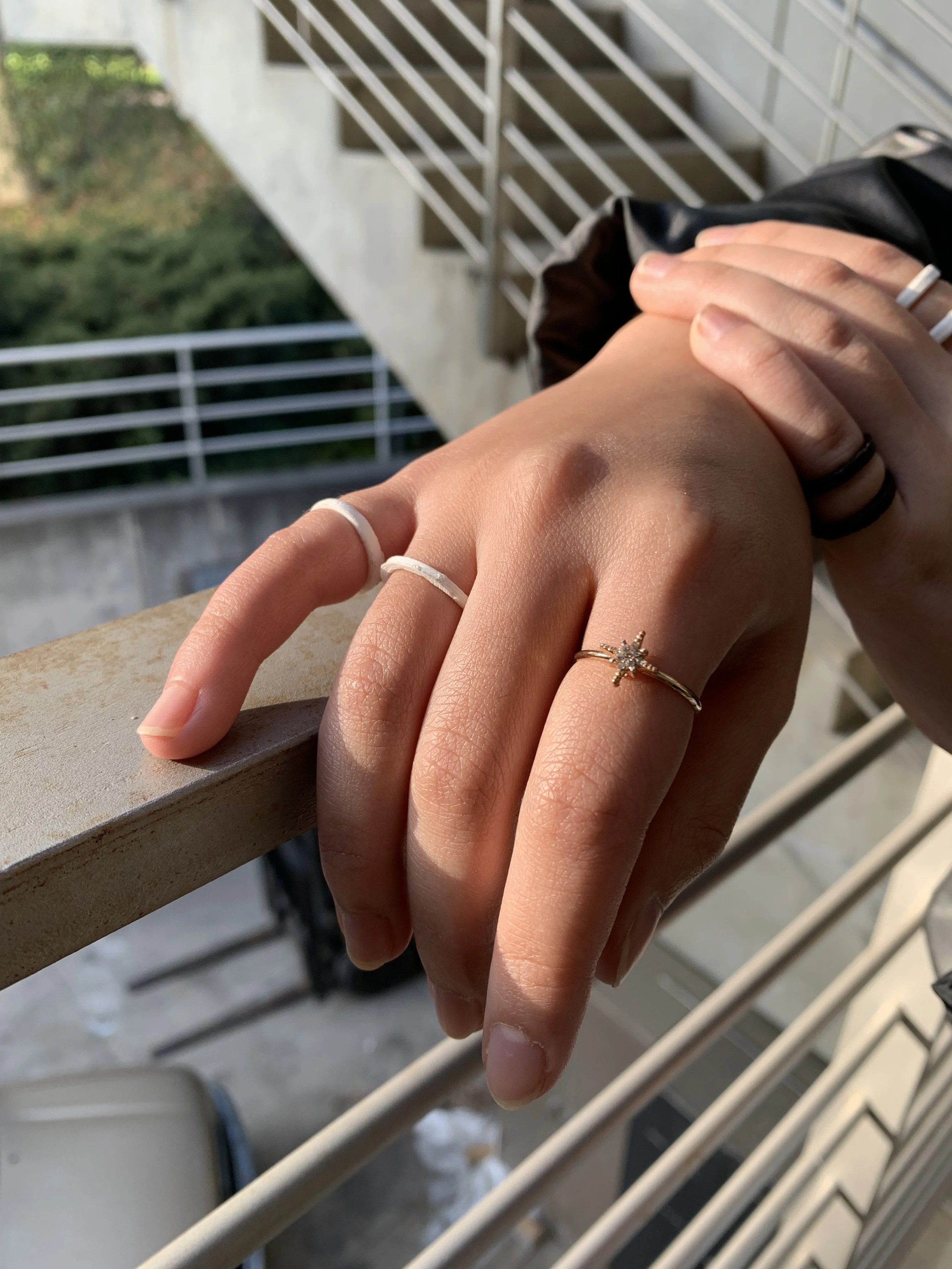When Perspective is a Box
At first, I intended to create a pentagon prism that lay 60 degrees on the pedestal with a flat surface. I chose this form for two reasons. One is because it is more doable compared to my other ideas, and secondly because it is one of the first ideas I came up with(to create a philosophical "window" like a sculpture that plays with perspectives). In the beginning, I tried to make the prism first, making 5 planks with a 54 º angle cut with the 36º table saw. However, the table saw counts it angle from 0 instead of 90, so the first attempt failed. Even worse, the maximum angle the table saw is capable of is 45º, too little for my 54º. Therefore, I transferred to the laser cutter with all the math, from the length of the edges to the angles of each piece, calculated. Still, the resulting pieces didn't match at first, possibly due to the thickness of the planks. Facing this issue, I revised my idea. In order to stabilize my sculpture, I adjusted the side surfaces. The result is a sculpture that resembles a falling house. To accommodate the "house" to my wish of it being a philosophical piece, I made the pedestal black, and the sculpture white, and drew a window on the flat surface inside the sculpture. Thus, the viewers are looking through a window that faces the black box; and, ironically, the view is that of a sunshine day.
Additive and Subtractive. This prompt makes me want to create something that plays with this concept: that by adding pieces, you subtract. So eventually, I go with my idea of a circular lamp attached to the wall with another piece of “floating” circle because I want to create something organic in contrast to the last project. However, this idea seems unrealistic because I am not planning to use any strings. Therefore, I came up with the idea of using mirrors. This is why I can possibly project a “virtual” circle and play with the infinite possibilities of light reflections. This mirror idea translated to my usage of the less rigid foils.
Future Cavism
model:
During the process, there are many issues that I went through. Because using the laser-cut slicer to make all the wood stacks will take up too much wood, I changed the size of my Fusion model several times. And after that was the most painful part of this project: stacking the woods piece by piece and gluing them together. Some of the pieces were off from the slicer model and because of height differences, the lamp ended up looking taller than it is supposed to be. I solved this problem by eliminating some even layers of wood.
In the end, I created foil pieces that are “customizable,” meaning anyone can place or create a different foil composition inside the lamp. Since the foils can be silently transparent, the interior of the rather simple and organic lamp becomes diverse. The silver color of the foil marked a sharp contrast with the dark, brown, and wooden texture of the lamp’s body. And the stacks of wood still consist of some rigid lines after sanding, which juxtaposed with the perfectly smooth surface of the foils. Finally, by adding the pieces of foil to the light, it “subtracted” or “multiplied” the light. My “Future Cavism” is a lamp that combines organic nature and humanity's ideal outlook toward Futurism. It is a piece of design, as well as a piece of math.
Lighting Effect:
Originally, I wanted to make a full cosplay custom of one of the characters of my own design. But this task seems impossible because we only have one week left to do our third project. So instead of making the full custom, I decided to take it easy and make a headband, which is part of that character. The design of the headband took several turns. In the end, once the test headband worked, I attached two strips on each side that can hang over and became an earring-like structure. But just making the headband seems too little. Therefore, I made several rings in addition and in advance to make a ring I bought at UCLA last month “wearable.” The ring was too big when I bought it because that is the only one left for the color that I like the most. To solve this problem, I figured that I can make rings that can fit my fingers exactly and can prevent the ring from falling off my fingers. In doing so, I discovered an app called Nomad, where I learned how to sculpt 3D designs on my iPad. Soon, the design was transferred to Cura and 3D-printed. Some of the rings failed at first because the size didn’t fit. Still, I made 9 rings of different sizes and with the color of black and white. They allow me to wear my old rings.
Wearables
Top: 3D printed rings.
Below: Headband design based on an idea for a character.



















